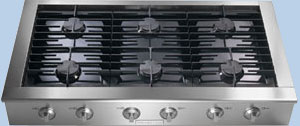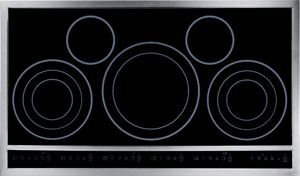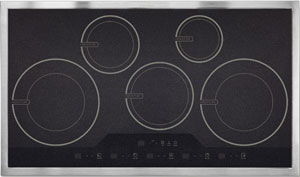Built-in Appliances: Combining Thoughtful Design Innovation with Superior Energy Performance
Energy Source
There is an emerging trend to look at the best performing energy source for a specific cooking appliance, even if it is different from other appliances in the design. Many improvements in electrical cooking appliances can make them the preferred option for even heating in ovens and some types of cook-tops. Some people prefer gas-fueled cooking appliances simply because they think they offer a greater level of control than some electric ones, particularly with cook-top and range-top burners. In response to these varied preferences, manufacturers offer a variety of interchangeable and independent appliances that use either gas or electric energy as their source. Some even offer an integrated "dual fuel" option with a gas range-top and electric oven all in one appliance. The potential downside to gas cooking appliances, of course, is the indoor air quality effects of gas combustion products. Therefore, including a ventilation fan that vents directly to the outside (not recirculating) becomes a significant component of gas cooking appliances. Keep in mind however, that selecting a conventional updraft hood or a downdraft hood can make a difference in the amount of make-up air that has to be heated or cooled to offset the exhausted air; downdraft hoods generally require several times more air than conventional updraft hoods.
Example 1:Light cooking, 7 days a week, 1 time per day at 30 minutes per use Medium power setting |
 |
||||||||||||||||
Example 2:Moderate cooking, 7 days a week, 2 times per day at 30 minutes per use Medium power setting |
 |
||||||||||||||||
Example 3:Heavy-duty cooking, 7 days a week, 2 times per day at 60 minutes per use High power setting |
 |
||||||||||||||||
Comparison of induction cooking with conventional electric radiant and gas cooking Images courtesy of Electrolux ICON® |
|||||||||||||||||









